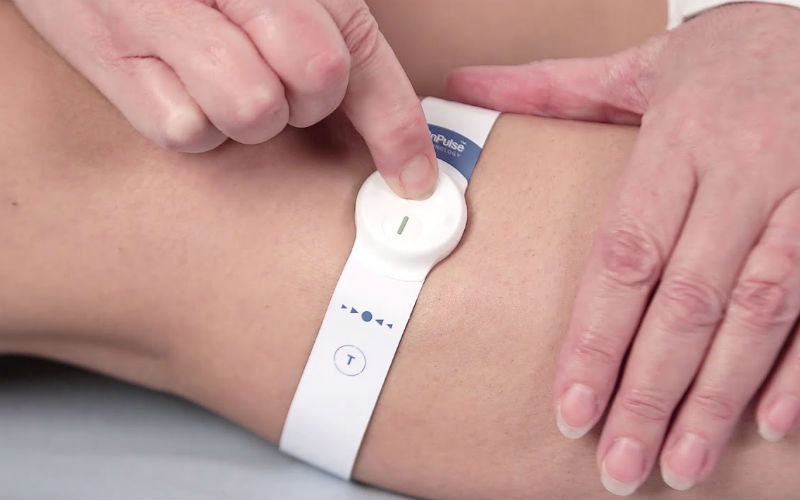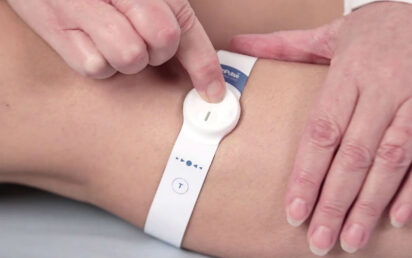A wearable tech device has potentially helped save lives by reducing the risk of blood clots in COVID-19 patients.
The geko device, developed by Firstkind alongside its OnPulse tech platform, resembles a wristwatch and is worn on the lower part of the leg.
It helps to increase blood flow in the deep veins of the calf in inactive patients, who have often recently left surgery, by stimulating the common peroneal nerve with painless, regular electrical impulses. It estimates that the effect is equal to 60 per cent of the flow that would be achieved by walking.
Prior to the COVID-19 pandemic its main aim was in prevention of deep vein thrombosis (DVT), treatment of oedema and wound healing.
It is estimated that venous thromboembolism (VTE) – which includes DVT and pulmonary embolism – is responsible for up to 40,000 deaths in England per year, more than 62% of which could be prevented through proper management and care.
Chris Walker is EMEA distributor manager for Sky Medical Technology, parent company of Firstkind, which employs 27 people in the UK. He told our virtual HealthTech event that following discussions with the NHS, the device was prepared for use in Nightingale venues – although these overspill field hospitals were ultimately not overflowing with COVID-19 patients as was initially feared.
“The primary mechanical means of preventing DVT or blood clotting formation is to use something called IPC, which are like blood pressure cuffs that fit around the legs,” he said. “A pump inflates and deflates them, which pushes venous return to stop clot formation.
“The issue with IPC from a Nightingale perspective was the sheer number of units they would have needed to cover the number of beds they were planning to have open for those patients. They simply weren’t available through manufacture. As a result of that, they were looking for an alternative mechanical prophylaxis device.
“The geko fitted the bill as a single-use disposable, because of the infection risk with COVID, and as it fits all sizes of patients, because you just don’t know what’s going to come through the door.
“In COVID patients, you’ve got a clotting risk all over the body because of the way the body’s reacting to the disease.”
The geko, originally the brainchild of Professor Arthur Tucker from St Bartholomew’s Hospital and Dr Duncan Bain, has a plastic casing and features printed circuit boards, electrodes, batteries, conductive gels and adhesives.
In the pre-coronavirus world it gained approval from Dr. Indira Natarajan, consultant stroke physician for the Royal Stoke University Hospital’s acute stroke team, part of the University Hospitals of North Midlands NHS Trust.
Many patients who have suffered ischemic or haemorrhagic strokes are unable to tolerate the IPC ‘cuff’ treatment, while the replacement anticoagulant treatment is also unsuitable as drugs could result in haemorrhagic transformation.
Dr Natarajan conducted a year-long study with 1,000 patients. He found that of 463 patients treated with IPC, 11 patients (2.4%) suffered from VTE. Of the 203 patients prescribed the alternative VTE prevention method – the geko – no incidence of VTE was reported 90 days post-discharge.
“The majority of patients tolerated the device well, finding it more comfortable and allowing them to be more mobile, as compared to patients undergoing IPC treatment,” he wrote in the resulting paper.
“Feedback was overall very positive, giving reassurance to the unit that this study had been correct and right to pursue.”
The National Institute for Health and Care Excellence now recommends the use of the geko device for hyper-acute stroke patients contraindicated for IPC treatment and who are unable to receive anticoagulants.


